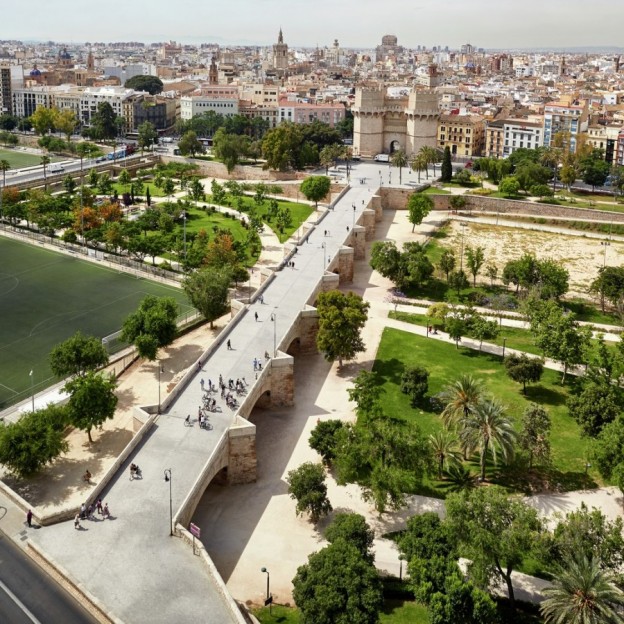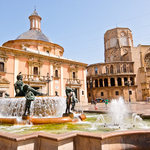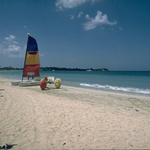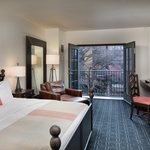Andy Mossack’s Insider guide to Valencia explores why so many visitors fall under her spell.
Valencia may be third in line after Madrid and Barcelona, but those in the know might just regard her with a lot more affection.
Valencia is quite the enigma. Just as comfortable holding hands with Baroque and Gothic as she is with courting contemporary. Just as happy to celebrate traditional paella to the world as she is exploring new culinary avenues. And, perhaps most importantly, good at listening to what her own people tell her.
The stunning Turia Gardens project is the perfect example. Back in the 50s, this eight-kilometre stretch of the River Turia that divided the city was prone to constant flooding so the council spent a fortune diverting it around the city. What was left was a dry flat riverbed that, as far as the authorities were concerned, would have made a perfect motorway from the airport direct to the beach.
But the People cried “nada! No motorway, we want it to be an open green space for recreation”. So, Valencia listened and today that empty riverbed is now the Turia Gardens, a beautiful eight kilometres of manicured parkland for cyclists, joggers, walkers and families. Architects, artists and landscapers joined forces to create a ribbon of green, dotted with fountains, lakes and playgrounds lined with palms, flora and fauna. What makes this all the more beautiful for me, is it it’s a proud product of Mother Nature and still remains the beating heart of the city.
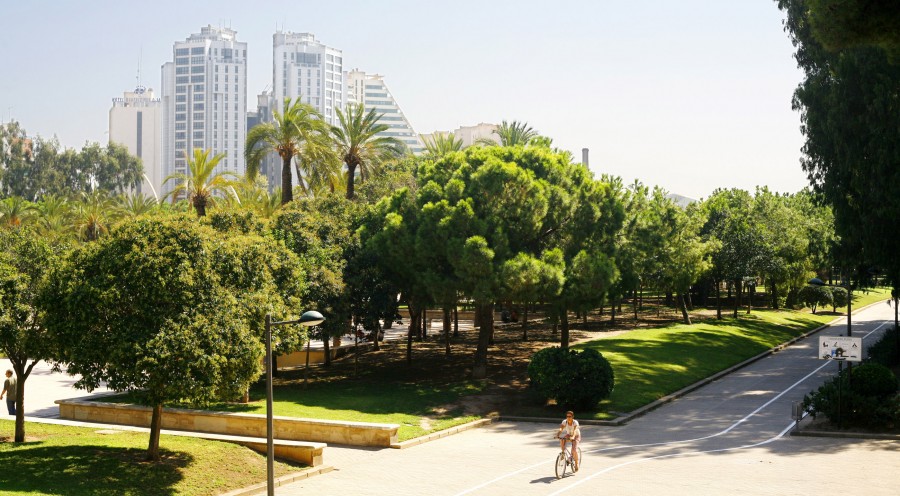
Not content with just creating a new city landmark more was to come. At the end of the Turia Gardens lies the City of Arts and Sciences an extraordinary collection of futuristic buildings surrounded by water features, housing the Arts Palace, Valencia’s answer to the Sydney Opera House, the Museum of Science, a wonderful journey through interactive technologies, the Hemispheric IMAX cinema and Oceanografic, the largest aquarium in Europe and a centre for marine science and conservation.
There are some very impressive marine animals to see including three enormous Beluga whales, walruses, penguins and of course their prized dolphins. The behind -the – scenes tour is well worth doing, particularly the sea turtle hospital which helps injured turtles to recuperate and breeds baby turtles to send out into the sea when they’re strong enough.
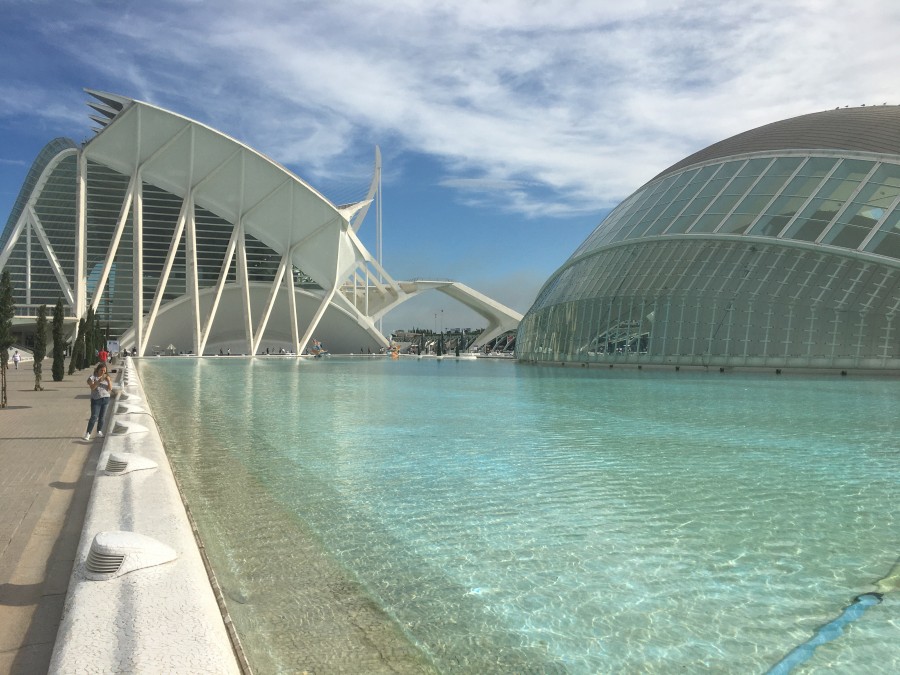

All this technology and modernity, yet a ten-minute walk transports us back thousands of years.
The historic centre awaits.
Valencia Historic Centre
Valencia’s historic centre has seen off a medley of historical suitors; the Romans, who built the first wall, then Muslim invaders in the shape of the Moors who built another wall around an ever-expanding town until finally, the Christians, who built a third defensive wall to protect what was by now a burgeoning city. The Roman wall is long gone sadly, but there are still remnants of the Moorish wall appearing at odd times around the old town, while Serranos Gate and the Cuart Towers are imposing relics from the Christian defences.
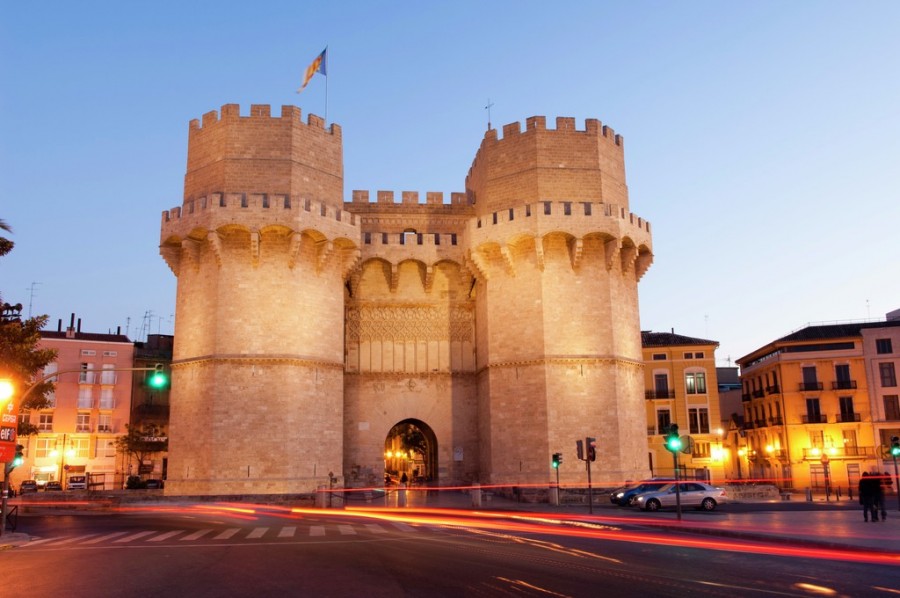
There are many fine examples of medieval and baroque churches throughout the old town, but San Juan del Hospital has perhaps the most intriguing story to tell. Valencia’s oldest church was built in the 13th century as a priory for the Knights of the Order of St. John. Warrior monks who metaphorically prayed with one hand while holding a sword in the other to fend off Muslim invaders.
They added a hospital, a convent and a cemetery, and this is where it gets interesting. It turns out this urban cemetery, the only one in Valencia, was concealing a treasure trove of history thanks to a remarkable renovation project being undertaken by a team of archaeologists.
Pablo Clari takes me on a personal tour around his project. Original painted red crosses of the Crusaders apart, they also uncovered two surprises; the last resting place of Constance, Empress of Greece and the remains of an ancient Roman circus where 10,000 spectators once watched chariots hurtling around the track.
I get my own Indiana Jones moment as I roll away a stone slab revealing a pit beneath and a ladder pointing me down into ancient Roman Valencia. I climb down and stand on the spina, the middle of the circus, where water was stored to throw on the sand track to dampen down the dust clouds as the chariots raced past.
A section of original sand track still remains and in my head, I hear the thunder of hooves.
The church itself is remarkable too. Abandoned for years, it was once used as a cinema and then a venue for British troops to hold boxing matches until it was restored, and religious services were held once again. The small museum holds an outstanding collection of artefacts and well worth a visit.

The Cathedral overlooking Plaza de la Virgen and Plaza de la Reina is another architectural gem and holds what many believe to be the true Holy Grail. The Vatican has recognised the claim and the little stone cup’s provenance can be traced back to biblical times and it’s been residing in Valencia since the 16th century. Also look for the statue of Santa Maria, the saint of pregnant ladies.
You will spot numerous ladies in various stages of pregnancy walking around her nine times every day to hopefully ensure a trouble-free birth. If you also happen to be visiting on a Thursday, the 1,000-year-old Ceremony of the Water Tribunal Tribunal de Las Aguas takes place outside the Cathedral’s Door of the Apostles each week at noon.
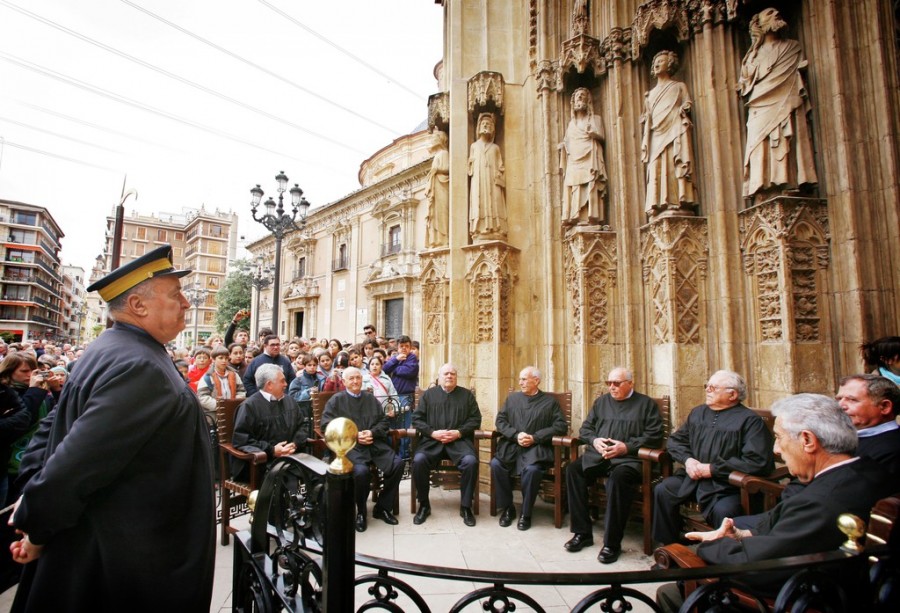
The historic centre is full of elegant plazas, boulevards and pavement cafes, but for me, exploring the twisty back lanes is equally satisfying. Hidden away here you’ll find urban street art attached to occasional chunks of Moorish wall, bohemian cafes, ceramic shops and boutiques and plenty of art galleries. Evidence of Valencia’s claim as a city full of cultural and edible highlights.
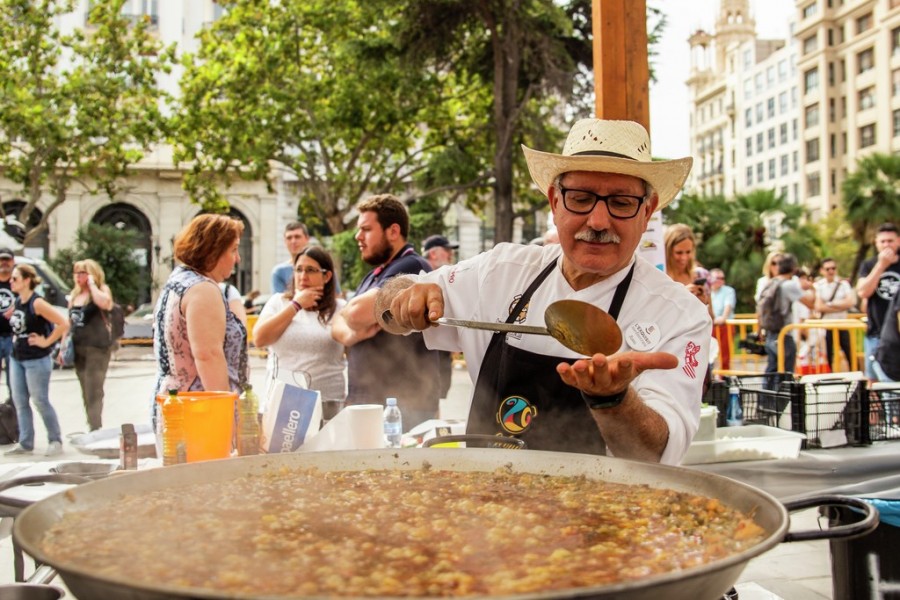
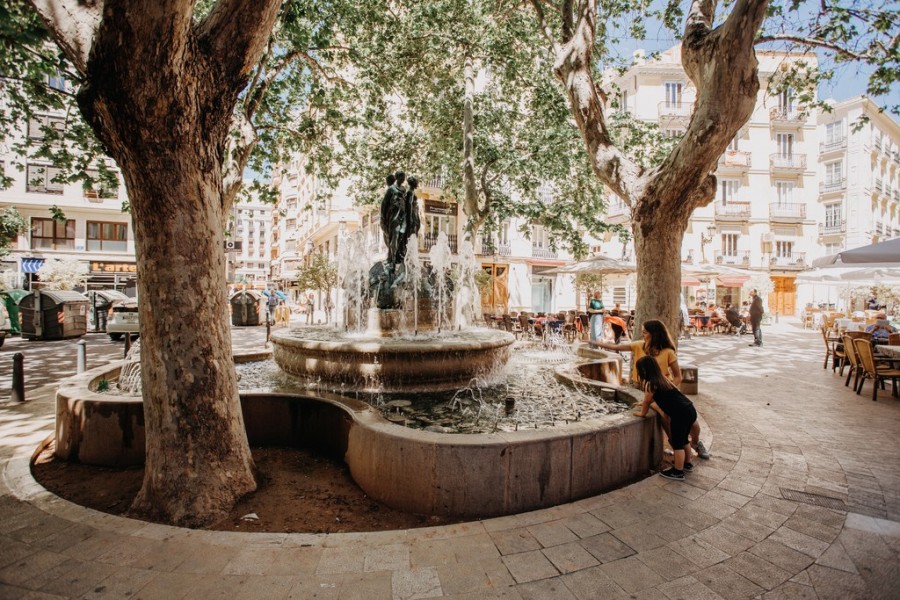
Speaking of the edible, there can be no finer example than the impressive Central Market, a spectacular indoor market dating back to 1928 with over 1,000 food stalls offering everything from whole Ibérico hams to farm-fresh olive oil. Here you’ll find locals battling with Michelin chefs to grab the best daily produce. Check out the paella dish stall just outside with every conceivable tool you’ll need to cook and serve Valencia’s famous creation.
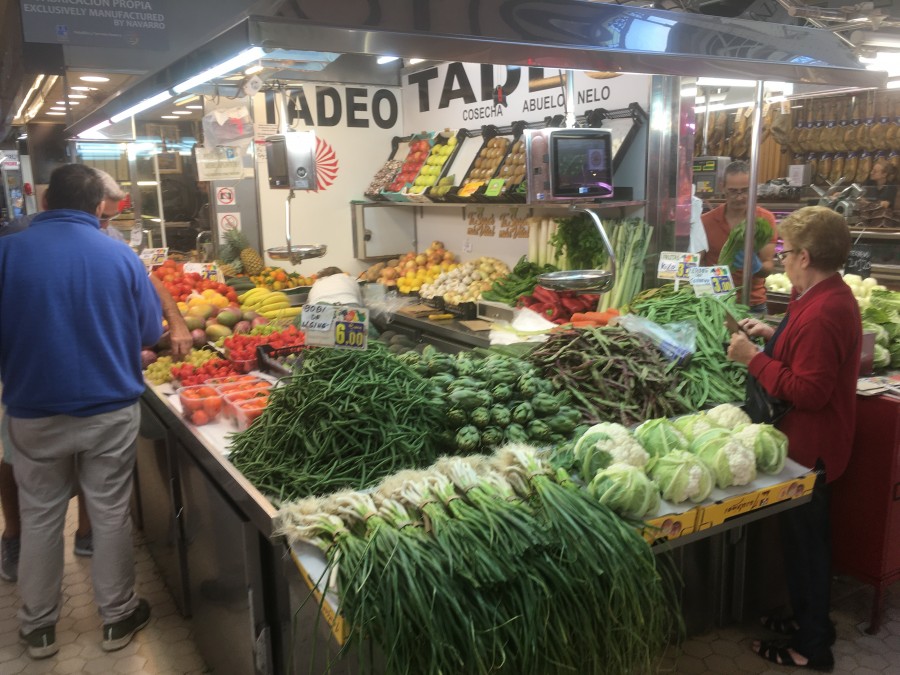
Almost opposite the Central Market lies the 16th century Silk Exchange the Llotja de la Seda, yet another glimpse into the city’s wealthy past. This was where the city’s silk traders plied their trade with exotic silks from the east. It wasn’t used simply for selling, the building also housed the Tribunal del Mar, the very first merchant tribunal in Spain, a court for settling disputes and sentencing debt-laden merchants, who ended up in the prison in the basement.
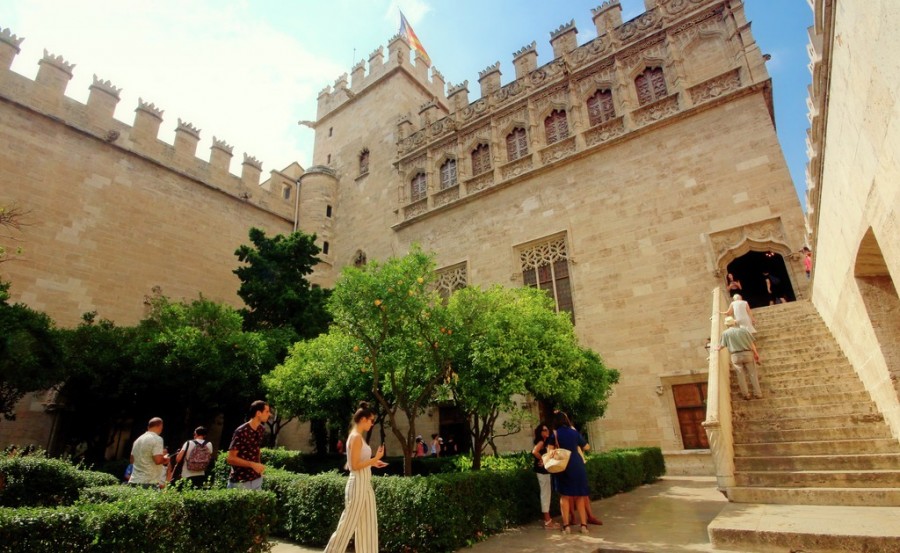
While we’re on the subject of unusual buildings, the Bombas Gens is another hidden gem. Now an excellent free-to-enter contemporary arts centre, it was once an important factory for making hydraulic pumps and later munitions. During the renovations, they uncovered a deep bunker to protect the workers from airstrikes and an extraordinary 14th-century wine cellar. Both of these can be viewed during a visit.
When it comes to the arts, the jewel in Valencia’s crown has to be the IVAM, the Institute of Valencia Modern Art, the very first centre of contemporary art in Spain. With over 10,000 permanent exhibits of art and photography from the 20th century including Julio González and Ignacio Pinazo, the museum has numerous temporary exhibitions to enjoy too. One of the current examples is from Jean Dubuffet which runs until 16th February 2020.
Outside the City
The Beach
Valencia’s pull is not just about the magnificent historic centre, there’s also the outstanding beaches to consider. Just a ten-minute ride from the centre, the Mediterranean lies waiting, capped with some outstanding sandy beaches. The old fishermen’s barrio of El Cabanyal, now thankfully saved from the bulldozers, is full of pastel-coloured ceramic tiled houses and is slowly transforming from blue-collar into a very trendy part of town.
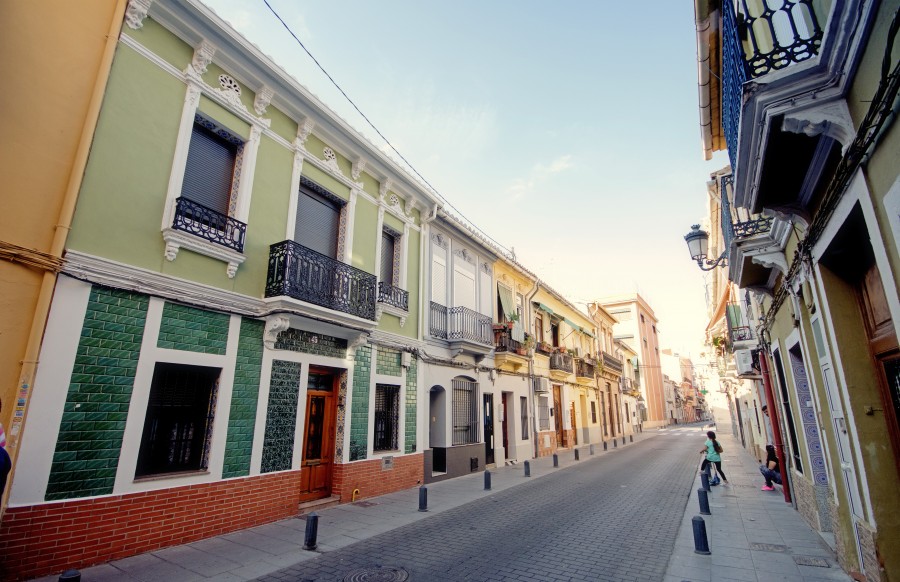
Hipster bars and restaurants now fill the old warehouses, while real estate prices climb steadily north. This is where you’ll still find long-standing residents hanging out in beach-front bars munching on locally caught clochinas and tapas.
Albufera Lake
Unmissable local tradition is to take a boat ride on the lake at sunset. But frankly, the beauty of these natural wetlands just a few minutes from the city centre is worth visiting any time of the day. Teeming with birdlife, Albufera lake is a natural freshwater lagoon that feeds the surrounding rice fields and is a protected nature reserve.
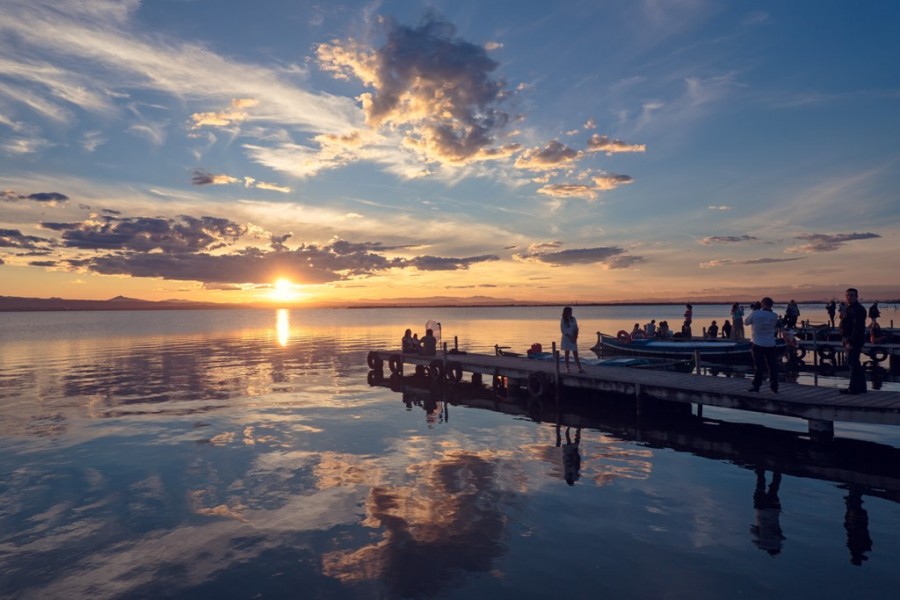
Where to eat
No shortage of fine food in this foodie city or opportunities to consume huge portions of Valencian paella which contains no fish or seafood just local rice, saffron, meat and snails.
Vaqueta Gastromercat is right opposite Central Market and the open kitchen offers great views of the delicious fare.
Q Tomas? a blend of traditional dishes with a contemporary twist. The wines here are excellent.
IVAM Cafe. Unbelievably good value and high quality. 3 courses for €13
The Colon Market is a former indoor food market that is now a hub for all kinds of restaurants and really buzzing at night. One to look out for is the Ma Khin Café named after serial restaurateur owner Stephen Anderson’s great grandmother. Anderson describes the food as de-colonial Asian. I’d describe it as very tasty indeed.
Away from busy Las Arenas beach, La Ferrera at Pinedo Beach is an oasis of calm but authentic Mediterranean cuisine.
A local staple at Cabanyal is Bodega La Pascuala, whose foot-long bocadillos are legendary and cheap as chips. You’ll thank me later.

Another legendary eatery at Cabanyal is Bodega Montana, the Garcia family-owned wine bar/restaurant run by dad Emiliano and son Alejandro. It’s cosy, atmospheric and you need to duck under the counter to get into the restaurant in the back. Reservations are mandatory unless you want to spend the evening waiting outside.
Where to stay
SH Ingles is a boutique hotel right in the historic centre. Great position for all the sights.
Out by the beach at Las Arenas is the magnificent Hotel Las Arenas Balneario Resort a 5 star resort that ticks all the boxes.
Tell me more about this insider guide to Valencia
Turismo Valencia has comprehensive details and maps of this insider guide to Valencia and all the major attractions, events, restaurants and music venues in Valencia.
The main festival each year is The Fallas which takes place 15-19th March enjoyed by literally tens of thousands of people. Pyrotechnics, bonfires, parades, music and mayhem.
British Airways flies a daily service to Valencia.

